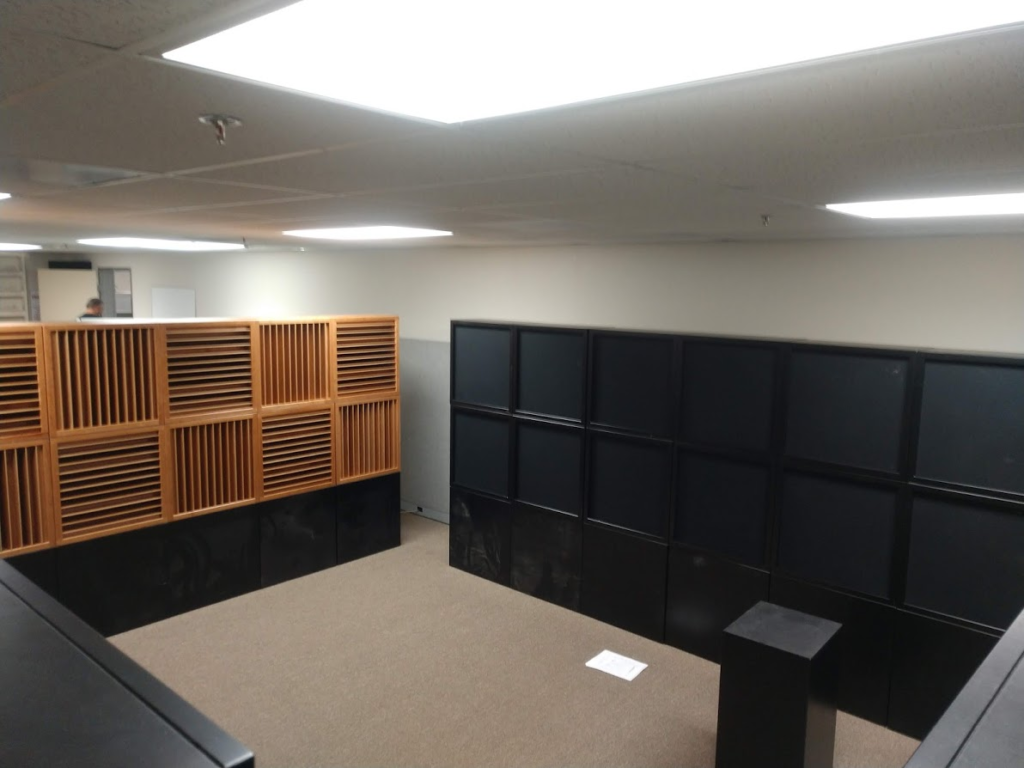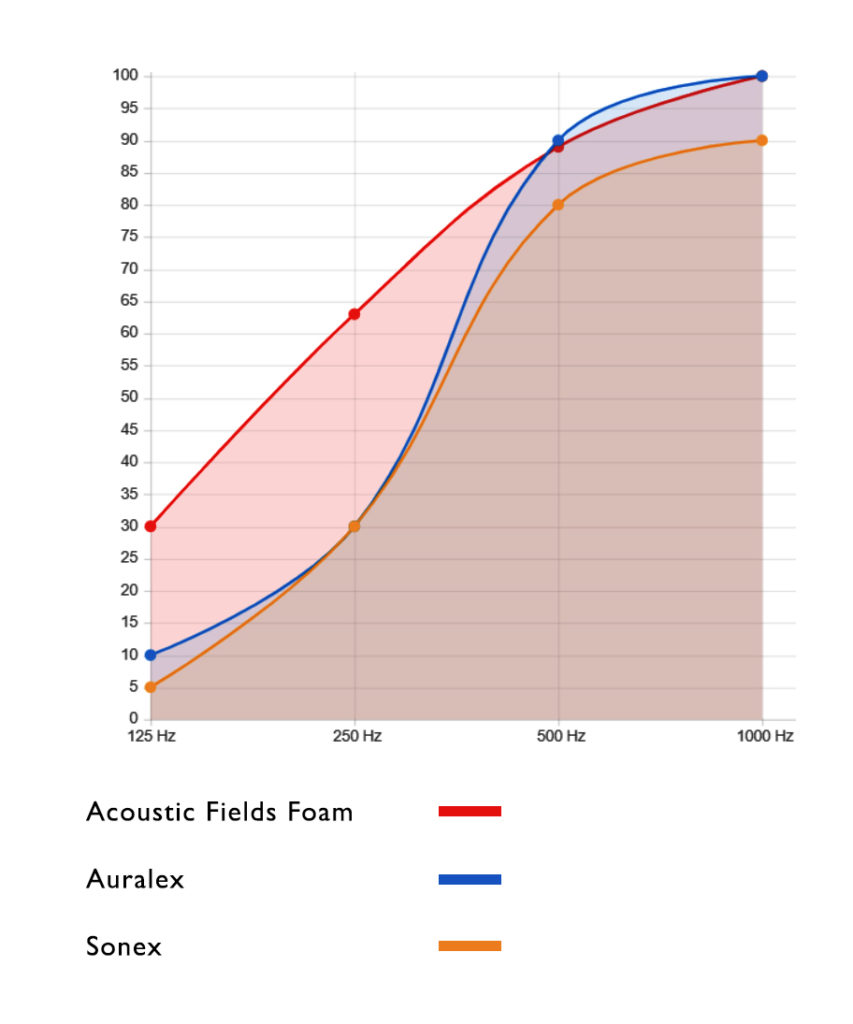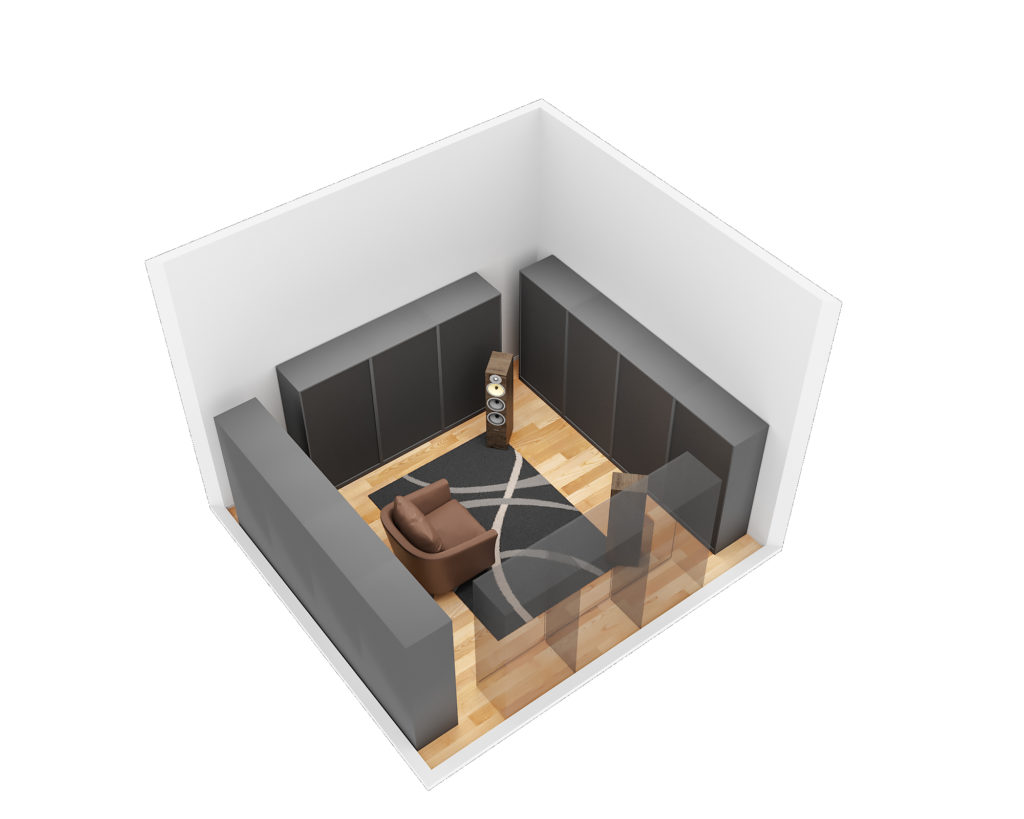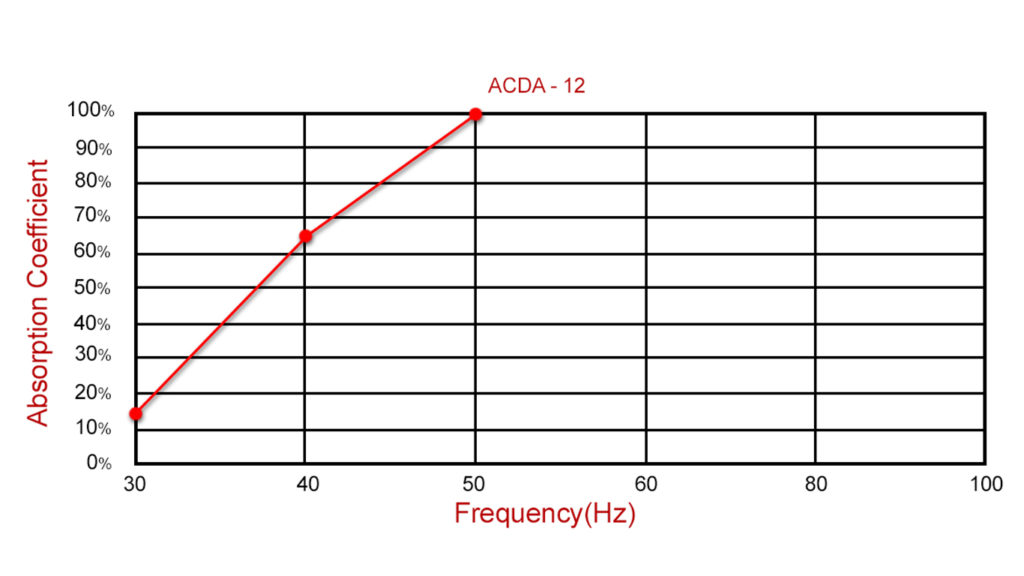There are many misconceptions regarding the set up of two-channel systems in audio room design. The misconceptions still linger since this blog was originally written. We have updated this blog on 11/14/19 to readdress these issues, half-truths, and hyperbole.
Audio room design or acoustic room design is something all music lovers have to give serious thought to. You spend thousands of dollars on gear and then place it in a room full of distortion. Our digital gear has high resolution and no distortion. We then take that gear and place it in a room that is all about distortion. The room is full of low-frequency pressure modes, reflections, and many other problems. You must plan your room dimensions, your gear set up, along with a host of other variables. If you do not plan ahead for your critical listening room, you will struggle through the entire process and never achieve the quality sound your gear is capable of creating.
Many Questions To Answer
Maybe you’re thinking where should I place my speakers? Should they be 4′ from the side walls or 5? What distance from the front wall should both speakers be placed? How far back should I sit? Can one side wall be glass and the other side wall be a closet? Can I have different materials on the front wall and different materials on the rear wall? What if my room is so large that the rear wall is 30′ away from my listening position? Do I need one chair or can I use a couch or love seat for two or more people? In short, what are the actual real-life dos and don’ts of acoustic room design you need to figure out right here, right now?
In the following video, I’ll go over some common dos and don’ts of room design and set up in personal listening rooms. I actually show you a personal listening room with four common errors, something we see on a consistent basis in most listening rooms. I also show you how unequal left and right channel sidewalls and the treatment or lack of treatment can destroy your stereo image and sound stage you are trying so hard to create. You will also see how nooks and spaces can create resonances of their own competing with the wanted direct energy from your loudspeakers. Finally, you will see how glass on one side channel and no glass on the other side and how it affects your audio enjoyment. See if you have any of these dos and don’ts of audiophile set up in your room and if you do, well, read on!
Designing A Two Channel Set Up
Setting up a two-channel listening room involves a list of acoustic design do’s and don’ts that must be followed and these are the same dos and don’ts the professionals go by when they set up there monitoring or control rooms. First, you must have equal distance from your right channel sidewall and your left channel sidewall. Sound is an electro-mechanical produced energy that moves at a constant speed. Your listening or monitoring position is a combination of the direct or straight line sound from your speakers and then the room sound which is the reflected energy from the sidewall surfaces among other surfaces. Both of these distances must be equal. The distances must be equal because we need the same distance for the sound to travel at the primary, secondary, and tertiary reflection points.

Proper Room Design for Two-Channel Audio Room
Three Reflection Issues
We have three reflections that must be managed. These three reflections have a direct impact on our stereo presentation. They have a direct impact on the center image, the resolution or definition of this image, and the centering of that image between the speakers. We must have equal distance from speakers to each sidewall, equal distance between each speaker, and equal distance from speakers to the listening position. We need predictability and consistency in all measurements, so we can dial in all the variables we need to manage in order to squeeze every ounce of performance out of our gear.
Acoustic Fields Studio Pro Foam : https://www.acousticfields.com/product/acoustic-foam/
Absorption / Diffusion
We have two treatment choices when it comes to managing sidewall reflections, we have two treatment options. We have diffusion and absorption. Absorption is the treatment of choice for managing the time signature of reflections. It is economical, does not take up much space and is relatively easy to install. However, not all absorption treatments are equal. Most companies design absorption treatments for noise. They design to absorb as much energy per square foot as they can. Music and voice are different than noise. Music and voice require special rates and levels of absorption to not over absorb and destroy the nuances in our recorded music sources. We must use proper rates and levels starting at 125 Hz. and going through 500 Hz.

Performance Comparison of Acoustic Fields Foam
No Open Areas
You can have no open areas or nooks in the listening room. Enclosures such as these produce audible resonances that can be heard at the listening position. Fill all fireplaces with sound-absorbing technology to reduce resonances. Keep the equipment rack as low as possible if you have it located against the front wall between the two speakers. If it is higher than 12″, it interferes with reflections from the front wall surfaces causing comb filtering in the middle range frequencies where our vocals lie. Make sure the front and both sidewalls are connected to each other to form a “U”. We need those three surface areas to be contiguous and connected to each other. We can have an open rear wall but the front of the room must form that predictable and consistent distances that we will require for proper set-up and room tuning.

An Example of a Very Small “Red Room” Listening Room
Room Treatment Type
Room treatment must be of the same type on both sidewalls. If you have chosen absorption for the right channel side wall then you must use absorption on the left sidewall. If you have chosen diffusion for the right side wall, then you must use diffusion on the left sidewall. What diffusion prime number to use depends on speaker type, speaker size, speaker radiation pattern, and the room size and volume.
Low-Frequency Treatment
The front wall and the sidewalls are the areas for locating low-frequency management technology. The front wall directly behind the speakers is the wall in most rooms is the area of highest low-frequency pressure and must be managed. You must measure the amount of unwanted low-frequency pressure and provide the correct type, amount, and position of the treatments. Only diaphragmatic absorption has the horsepower to deal with large amounts of unwanted low-frequency pressure. Boxes filled with building insulation will not work here. You must have a technology that has the proper rates and levels of absorption to deal with 30, 40, and 50 Hz. energy. Here is the performance data for our ACDA-12 diaphragmatic absorber.

Performance Data of our ACDA-12 Diaphragmatic Absorber
ACDA units offered by Acoustic Fields: https://www.acousticfields.com/product-category/sound-absorption/acda-series/
Summary
So I hope this brief discussion has helped you. If you have any questions at any time I am always on hand to help answer them. Leave them in the comments section or email me at info@acousticfields.com. If you would like to learn more about room acoustics, and in particular audio room design, please sign up for my free video training and ebook by joining the mailing list here. I send room tuning tips and things for you to test in your room every Wednesday. They are easy to follow and really help you enjoy more of their music.
Thanks and speak soon
Dennis








Hi Dennis,
your videos are always so instructive ! thanks a lot for all those advises and for reminding things that we know sometimes but that we don’t take enough care. We have exchanged some mails last month after you made for me a room analysis, I bought you the plans to make a BDA. I need time now to measure the room modes and to construct the BDA ( 2 pieces I think). I will manage time to get a consultation with you by skype as soon as possible. Since your analysis of my room I’ve changed the position of my desk and monitors , the diffusion was in the lengh direction and now it is in the width direction ( see the map I sent you for the room analysis if you already kept it ), it seems to sound better and more precise.
A last thing, I change my email address, wich becomes : loulceotom@gmail.com instead of yann.perrin2@wanadoo.fr , do I have to create a new account ?
Thanks a lot.
Yann
Hi Yann,
You are correct. It is best to set up a time slot so we can speak about your room. Go to the Book In link in my email and set up a time that works for both of us.
Talk to you soon.
Dennis
My wife and myself will be retiring in the next few years. We’re relocating into a cabin in the hills. We’ll be adding space to this cabin, lower level a three bay garage with a short basement. Above a great room, with a master suite. Above the third bay, my wife has agreed to let me build an audio room.
Could you give me some ideas of space and shape, so when we go to the architects, we can have this designed into the plans.
Thank you very much,
Dale
Hi Dale, Go to https://www.acousticfields.com/free-acoustic-treatment-room-analysis-tell-us-about-your-room/ and fill out all the required information. I will then run your numbers against our data base and assist you with proper size and volume to match usage.
Let’s say I’m designing a recording studio. I’m going to have a large live room, maybe 34′ x 75′. At one end of this room I’ll have a control room, 21′ x 34′ (with 13′ ceiling). On each side of this control room will be an isolation booth, 21′ x 13′, with 8′ ceiling. At the back of the control room will be four smaller isolation booths, 8′ x 5′ with 13′ ceilings. I need sight lines into all these rooms from the control room, as well as into other rooms if possible. How do I do this without loads of glass? Would the glass taint the sound so badly that the sight-lines would simply not be worth it? Is there any rule of thumb for resolving this issue, such us a limit to how much of a wall should be used for these communication windows?
–Thanks!
Hi Kimball, Your project will take extensive planning and designing. You have to plan first before you build. We can assist you with the design using our design service. Send us an email to info@acousticfields.com.
I am university teacher of acoustics and sound rooms as well as electronics.Your article is one of the best I have ever read with only one slip.Sound waves are mechanical waves carrying mechanical energy and not electro-mechanical as stated ..Thank you.
I, Sound waves are electromechanically produced. Their source is a moving diaphragm that is electromechanically driven.